It was just one of those “fishy” places, where two stunning backcountry Alaskan rivers come together and form a river with a much more famous reputation. The two smaller rivers, each running out of fairly substantial lakes higher in the drainage, are largely unknown (at least by their names on the map). Where their currents collide and the “big” river starts is this mishmash of foam and detritus and erratic whirlpools.
It’s rainbow heaven if you’re armed with a fly rod. And the options are limitless. A streamer? Absolutely. But, judging by the frequent tail slaps and the just-under-the-surface surges of water agitated by behemoth trout, a dry fly might work, too. Even better? A big, bushy dry followed by a dropper — a shiny, silver Perdigon about two feet under would surely entice a leopard-spotted bush-country rainbow trout to eat.
The latter may have been a more effective option. But I chose the streamer. A long, purple creation the guides in the area absolutely love. It casts like a dirty diaper and pulses in the fast-flowing current like a pole-dancer. It was way more fun than hoping a rainbow might grab a size 12 nymph on a dead drift. And, in the fast current, the fly, even in its weighted form, undulated just a few inches under the surface — if a fish took it, I’d see it happen.
With a fly this big, the cast doesn’t have to be a thing of beauty. Horseshoes. Hand grenades. Close is just fine. We’d beached the skiff right at the confluence of the two rivers where a noticeable gravel bar separates the two waterways, making for an excellent cast platform. I heaved the rabbit-strip concoction upstream and across the smaller of the two rivers, knowing the current would catch the belly in the fly line and swing it right into the sweet spot where the two currents merged and became one.
And it didn’t take long. A big, white maw opened up under the fly as it reached the apex of the swing, and my line stretched tight. Such is an afternoon spent streamer fishing for big Alaskan rainbows.
But something felt off. Just not quite right. First, this fish, rather than bolt for the surface and explode from the water like nearly every other big rainbow we hooked during our stay, bulldogged for the river bottom. My 7-weight dipped and pulsed appreciably—it was a nice trout, no doubt about it.
After a spirited fight, I was able to drag the big fish into softer water, and that’s when I realized I hadn’t caught a trout at all. Instead, I’d hooked a char. And char, in the form of Dolly Varden, are fairly common in this vast, southwest Alaskan wilderness. But this wasn’t a Dolly, either.
Instead, I soon realized I had hooked a lake trout. And a nice one, at that.
“What are you doing here?” I asked, as our guide got his hands on the leader and pulled the beefy fish closer to the bank. I did a quick check of my surroundings. Yes, each of the two rivers that converged before me flowed from higher lakes, but we weren’t anywhere near these lakes. In fact, we were a good six to eight miles from one lake and probably closer to 10 miles from the other.
Logic states that a char given the name “lake trout” shouldn’t be found that far downstream in a river. And it’s not like it was a slow, frog-water river, either — each stream boasts lots of heavy water, rapids, swift runs and tons of in-stream structure. No self-respecting “lake trout” would mistake either river for a lake. And, it’s worth noting, the next big body of water downstream wasn’t a lake, either. It was the ocean.
“Is this a bit unusual?” I asked our guide, Chip Lamont.
“Very,” he said. “But not unheard of. They’re predators. They follow the food.”
The food, of course, in early summer in southwest Alaska is found among the schools of down-running sockeye salmon fry — the result of the bounty from the record salmon run a summer ago. Literally millions and millions of inch-long fish ride the currents, tail first, on their way to the estuaries and, eventually, the open north Pacific. They’ll spend two or three years at sea and then come back to repeat the cycle.
But first, they have to run the gauntlet of rainbow trout, Dolly Varden and, yes, big lake trout. Even if the lake trout have to navigate the normally foreign environs of the region’s rivers to get at the baby salmon.
Deep-water predators
Where I live, most anglers associate lake trout with cold, deep water. Here in the Greater Yellowstone Ecosystem of southern Montana, western Wyoming and eastern Idaho, lake trout aren’t native — they were introduced, either intentionally by well-meaning fisheries managers in places like Jackson Lake and Bear Lake or illegally, by individuals who wanted to “improve” the angling menu in places like Yellowstone Lake. The latter planting damn near destroyed the lake’s native cutthroat trout population — only steady work by the National Park Service over the last two decades has pushed the laker population down and allowed for a cutthroat recovery of sorts.
For most of the year, lake trout aren’t available to fly rodders. They’ll move into the shallows in the spring, just after ice out, when their prey base (smaller cutthroat trout, for instance) does the same thing. And then they’ll move into the shallows again in the fall for their annual spawn. But even then, they’re hardly a prolific fly-fishing target.
But, in more northern environs, lake trout can be targeted by fly anglers all summer long. In places like southwest Alaska or farther east in the lakes of the Yukon and the Northwest Territories, lakers cruise shallow lakes and eat everything from grayling and whitefish to baby pike, Arctic char and, yes, other lake trout. At these extreme latitudes, the water never gets too warm for these cold-water-loving hunters, and that means, for anglers, lake trout measured in pounds, not inches, are always on the menu.
And, for anglers, the appeal of lake trout is easy to understand. In many northern lakes, these big char grow upwards of 30 pounds and can stretch the tape well over 40 inches. That’s a big damn fish. Nevertheless, lake trout don’t enjoy much prominence among fly fishers. The misguided notion is that they don’t fight very hard or, worse, that they’re trash fish and not worth the effort.
But I’m here to tell you, I’ll travel all over the North in pursuit of big lake trout. They are voracious predators that will happily chase everything from ignominious streamers pulled through deep runs or, in the extreme latitudes, mouse patterns skated over likely trout lies. And the fight? In cold water, where they belong, lake trout are battlers. Don’t let anyone tell you differently.
The ‘river runs black with trout’
One place where I’ve had good luck with lake trout in generally shallow water is in the southern Yukon. In fact, the lake trout around Kluane National Park near Haines Junction spend most of their time in shallow water. It’s where their food is, and, in this unique area shaped by glacial retreat eons ago, the lakes just don’t get that deep to begin with.
This means lake trout in places like the fabled Dezadeash Lake are almost always just a fly cast away, even if it takes a sink-tip fly line to reach them.
Several years ago, on a trip through western Canada and on to Alaska, I encountered lake trout in the mouth of the Kathleen River in July — I was swinging streamers for rainbows that were introduced to the area in the 1950s, and I actually caught more char than I did trout. And some of them were really big — like 24 or 26 inches. Confused, I did some research. Throughout the southern Yukon, lake trout are indigenous predators that seek out cold-water inflows for two reasons: food and thermal relief.
In deeper lakes, it’s very likely that the big char would have just gone deep to seek cooler water. But in places like the Kathleen River system or nearby Dezadeash (pronounced Dez-uh-dee-ash), where the deepest water might only be 15 to 20 feet deep, the best thermal relief comes in the form of inflowing rivers and streams. These waters are sourced by melting high-country snow or even glaciers, so they’re perfectly cold, and almost all of them teem with grayling and whitefish — primary food sources for the big char.
Hardy Ruf, owner and operator of Dalton Trail Lodge on the shores of Dezadeash Lake, says the lake trout in his region are also highly migratory. In other Canadian lake-trout strongholds, the big fish might move into the shallows in September and October to spawn in the shallows wherever the substrate allows for eggs to receive plenty of oxygen. In the Yukon, Ruf says, the lake trout actually migrate into the rivers to spawn.
“In September,” Ruf says of the Kathleen River, about 10 kilometers from his fishing lodge, “the river runs black with trout.”
This isn’t the only migratory lake-trout population. There is a strain of lakers in Lake Athabasca on the border with Saskatchewan and the Northwest Territories that pushes up rivers and streams entering the lake, just like salmon.
Farther north in the shallow tundra lakes of Alaska and throughout Canada, lake trout swim alongside Arctic char and grayling, where they’ve perfected a predator-prey balance in water that might be only a few meters deep.
The typical lake trout perception is purely based on what most of us American anglers believe to be true — lake trout are deep-water fish. Period. End of story.
Underappreciated
As a college student in south-central Colorado in the late 80s and early 90s, I had a totally utilitarian relationship with lake trout. While I’d spend spring, summer and fall exploring the many public-lands rivers and streams around Gunnison looking for my next favorite trout haunt, I’d devote quite a bit of time in the winter to chasing lake trout through the ice at Taylor Reservoir.
These big fish, introduced years earlier by state fisheries managers, were excellent sources of protein, and I caught and killed big lakers at a regular clip. I had a freezer full of lake trout filets, and I’d occasionally do a fish bake for friends at my little off-campus apartment. Done right, the oily flesh of a fresh lake trout is really good.
Then, one April afternoon, we got a dose of gorgeous weather, and I drove down to the Gunnison River to swing streamers for pre-runoff browns and rainbows. On my first cast, I hooked something big. Really big. About 15 minutes later, I finally beached a 30-inch lake trout. I was absolutely floored.
I kept the big fish (because, as I said, as a college kid, fresh fish was a delicacy) and had a big party that night. Coupled with a couple of cases of Olympia ($2.76 a 12-pack at the Wet Grocer at the time) the fish probably fed a dozen of my buddies. But I was still baffled as to why the introduced char was several miles up the Gunnison River from the fabled Blue Mesa Reservoir, where, rumor had it, world-record lake trout haunted the flooded river canyon.
So, I went back to the river the next afternoon, and I’ll be damned if I didn’t catch another laker. And then another. I also caught two giant browns about two-feet long each. You’d think, as a student in an educational environment, I’d have figured it out sooner. And when it hit me, it was a total face-palm moment.
Blue Mesa, in addition to being a really great fishery for browns, rainbows and lake trout, is also home to an introduced population of kokanee salmon — every fall, the bright red landlocked sockeyes run up the river to the Roaring Judy Hatchery near Almont. And every spring, hatchery workers release millions of kokanee smolts into the river, where they migrate, tail-first, to the lake.
And the lake trout, just like they might do in their home waters of southwest Alaska, come up the river to meet the down-running smolt.
For years, I kept the down-running kokanee migration a secret — I’d check in with the folks at the hatchery and find out when the smolts were turned out, and I’d wait a few days and then start hitting the river in earnest with flashy white bunny leeches.
It didn’t take long, though, for folks to figure out the spring migration, and, by the time I graduated, the river was a rodeo when the kokanee smolts were released. I’d guess more big Blue Mesa lakers were harvested during the week of the down-running kokanee migration than at any other time of the year — and the bulk of them were probably taken in the river, not the lake.
Nevertheless, it was that experience that gave me the deep appreciation for the lake-dwelling char of the Arctic and boreal north. I came to view these big, surly fish as truly beautiful,with their random, deep, green spot patterns and heavy shoulders. Their generally angry dispositions make them a worthy fly-rod quarry. But not everyone agrees.
They remain underappreciated by most fly rodders. And, in the grand scheme of things, that’s OK with me. But I’m counting on a visit to Dezadeash Lake in the near future, where I’ll reconnect with these incredible char. For those who turn up their noses, no worries.
I’m doing it so you don’t have to.

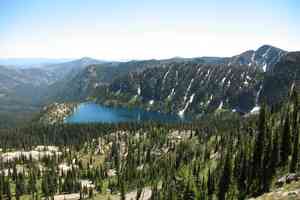
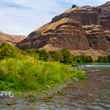

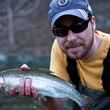
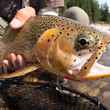
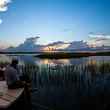
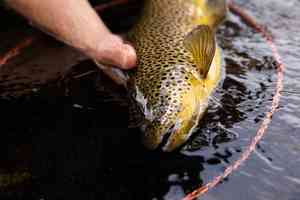


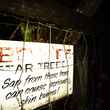
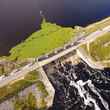
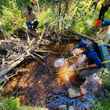
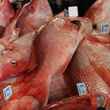
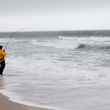

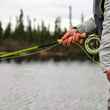

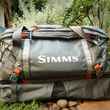

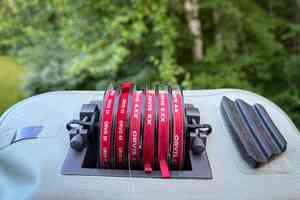
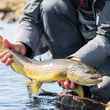
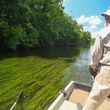


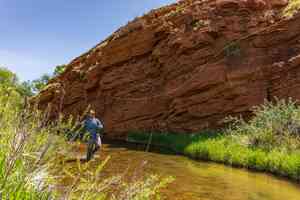



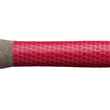
Comments